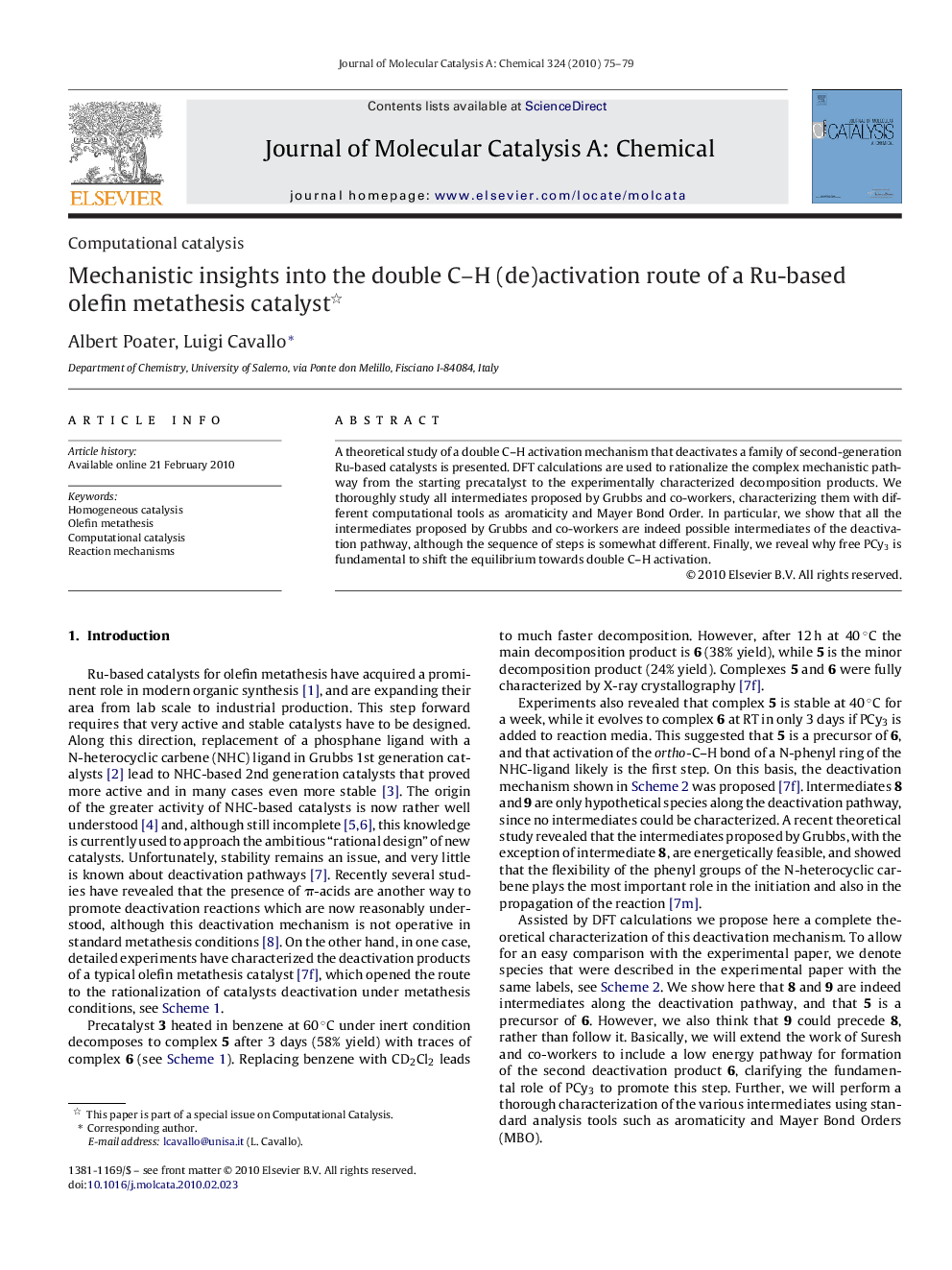| Article ID | Journal | Published Year | Pages | File Type |
|---|---|---|---|---|
| 66768 | Journal of Molecular Catalysis A: Chemical | 2010 | 5 Pages |
A theoretical study of a double C–H activation mechanism that deactivates a family of second-generation Ru-based catalysts is presented. DFT calculations are used to rationalize the complex mechanistic pathway from the starting precatalyst to the experimentally characterized decomposition products. We thoroughly study all intermediates proposed by Grubbs and co-workers, characterizing them with different computational tools as aromaticity and Mayer Bond Order. In particular, we show that all the intermediates proposed by Grubbs and co-workers are indeed possible intermediates of the deactivation pathway, although the sequence of steps is somewhat different. Finally, we reveal why free PCy3 is fundamental to shift the equilibrium towards double C–H activation.
Graphical abstractRu-complexes relevant to olefin catalysis suffer from deactivation reactions whose mechanism is often difficult to understand. We report here a detailed DFT study showing all the steps that convert the starting complex A into the product B first, and then to evolution of B into product C.Figure optionsDownload full-size imageDownload high-quality image (57 K)Download as PowerPoint slide
